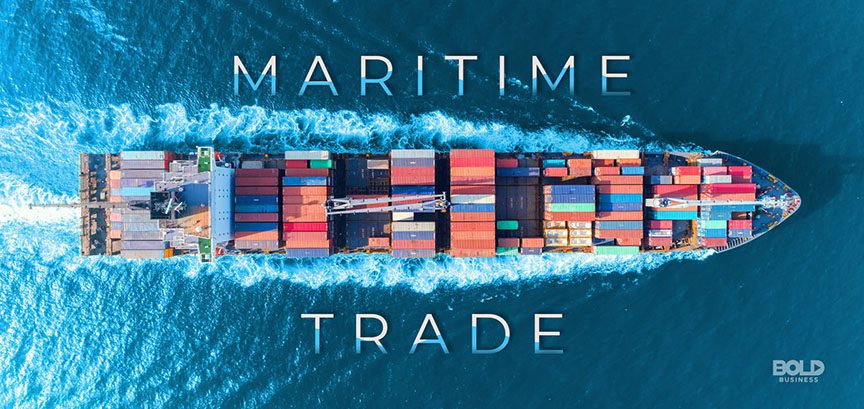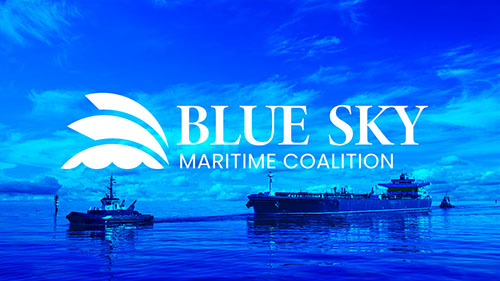General Port Regulations
-
-
- Port Limits: Defined as 31°30’00″N to 31°45’00″N and 121°05’00″E to 121°25’00″E (MSA Notice 2023-12)
- Mandatory Reporting Points:
- 12nm offshore: VHF Ch 16/12
- Port entrance: Automatic AIS position reporting
- 24-hour pre-arrival notice via email (portops@taicangport.gov.cn)
- New: Digital declaration via porttaicang.cn 48hrs before ETA
- Speed Limits:
- Outer harbor: ≤10 knots
- Inner harbor: ≤5 knots
- Terminal areas: ≤3 knots
- Within 500m of LNG terminal: ≤8 knots
- New: ≤6 knots during bunkering operations
- Vessel age restrictions:
- Oil tankers: ≤20 years
- Bulk carriers: ≤25 years
- Special approval required for older vessels
- New: Additional inspection for vessels >15 years
- New: Daylight restrictions:
- Vessels >300m LOA: 0600-1800 only
- Special night navigation permit available
- Vessel Traffic Management
- VTS Requirements:
- Continuous monitoring on Ch 12
- Position reports every 15 minutes for vessels >10,000GT
- Mandatory AIS-SART testing before entry
- New: Digital VTS clearance required before movement
- Traffic Separation Scheme:
- Inbound lane: Starboard side (121°18’E to 121°20’E)
- Outbound lane: Port side (121°15’E to 121°17’E)
- 2nm separation zone
- No-go zone at 31°42’N 121°19’E
- New: Recommended tracks for VLCCs published
- Restricted Movements:
- No overtaking in inner channel
- Daylight only for vessels >250m LOA
- Tidal restrictions for vessels >18m draft
- New: Current speed >3 knots: movement restrictions
- Mandatory escort tugs for:
- VLCCs (>200,000DWT)
- LNG carriers
- Vessels with engine problems
- New: All vessels during visibility <1km
- New: Anchorage regulations:
- Anchorage A: Vessels <200m
- Anchorage B: Vessels >200m
- Maximum stay: 72 hours
- VTS Requirements:
- Environmental Compliance
- Air Emissions:
- 0.10% sulfur limit at berth (GB 17586-2023)
- Shore power mandatory for vessels >5,000GT from 2025
- Continuous emissions monitoring for tankers
- New: NOx Tier III requirements for vessels built after 2021
- Waste Management:
- Plastic waste: Zero discharge
- Oil residues: Max 30L per operation
- Mandatory food waste separation from 2024-07-01
- New: E-waste collection points at all terminals
- Ballast Water:
- Exchange prohibited within 12nm
- D-2 standard required for all vessels
- Ballast water sampling facility available
- New: Mandatory ballast water log inspection
- Underwater noise restrictions:
- ≤160 dB re 1μPa @ 1m during berthing
- Special measures for marine mammals season
- New: Acoustic monitoring system installed
- New: Anti-fouling requirements:
- Biocide-free coatings preferred
- Hull cleaning only at approved facilities
- Air Emissions:
- Safety Requirements
- Fire Prevention:
- Hot work permit required
- Fire patrols every 4 hours
- Thermal imaging cameras mandatory for tankers
- New: Fire drill within 24hrs of arrival
- Mooring Operations:
- Minimum 6 lines for vessels >200m
- Automatic tension monitoring required
- Synthetic rope testing every 6 months
- New: Emergency release system testing monthly
- Emergency Equipment:
- Oil spill kit ≥200L capacity
- Emergency towing gear ready
- Mandatory emergency lighting for all gangways
- New: Gas detectors for all tankers
- Gangway safety:
- Maximum angle ≤30°
- Netting required for heights >2m
- 24-hour watch for unattended gangways
- New: Gangway load testing certificate required
- New: Working aloft regulations:
- Safety harness mandatory
- Permit required for heights >5m
- No work during winds >15m/s
- Fire Prevention:
- Cargo Operations
- Container Securing:
- Visual check every 12 hours
- Lashing software required for >8,000TEU
- Wind speed restrictions (>15m/s cease operations)
- New: Mandatory twist lock inspection
- Dangerous Goods:
- Segregation per IMDG Code
- Emergency plans for Class 1-3
- Mandatory DG cargo tracking system
- New: Temperature monitoring for Class 4.1
- Bulk Cargo:
- Coal: Methane monitoring every 8 hours
- Grain: Fumigation certificate
- Iron ore moisture content ≤8%
- New: Dust suppression during loading/unloading
- Liquid cargo transfer:
- Vapor recovery mandatory
- Emergency shutdown system testing before operations
- Max transfer rate ≤3,000m³/hr without special approval
- New: Bonding cable inspection required
- New: Heavy lift operations:
- Prior notice 72hrs in advance
- Wind limit ≤10m/s
- Dedicated safety officer required
- Container Securing:
- Enforcement Measures
- Inspection Regime:
- Port State Control: 25% random inspection
- Mandatory for vessels >15 years old
- Cyber security inspections for tankers
- New: Cargo securing special inspection program
- Penalties:
- AIS non-compliance: Up to ¥50,000
- Oil pollution: Up to ¥500,000
- False declarations: Up to ¥200,000
- New: Safety violation fines doubled during holidays
- Detention Criteria:
- 3+ major deficiencies
- Critical safety items
- Repeated minor deficiencies (5+)
- New: Automatic detention for unauthorized modifications
- Reward system:
- Green ship incentives (5% fee reduction)
- Exemplary safety record recognition
- New: Fast-track clearance for compliant vessels
- New: Appeal process:
- Written protest within 24hrs
- Review by port authority committee
- Final decision within 7 days
- Inspection Regime:
- Legal Framework
- International Conventions:
- SOLAS 1974 (2021 amendments)
- MARPOL 73/78 (Annex VI)
- BWM Convention 2004
- New: Hong Kong Convention 2009 (recycling)
- National Laws:
- China Maritime Code
- Port Law of PRC
- New: Yangtze River Protection Law
- Local Regulations:
- Taicang Port Authority Rules (2024 Revision)
- Yangtze River Navigation Rules (Article 15-28)
- Taicang Special Economic Zone Maritime Safety Regulations
- New: Taicang Port Emergency Response Plan
- Industry Standards:
- OCIMF MEG4 (2023 Edition)
- ICS Bridge Procedures Guide
- IMO MSC.1/Circ.1638 (Cyber Risk Management)
- New: ISO 23037:2021 (Port call optimization)
- International Conventions:
- Verification Sources
- Official Documents:
- MSA Regulations 2024 (Circular No. 15-2024)
- Taicang Port Operations Manual (Version 5.2)
- China Port Association Technical Guidelines
- New: IMO Member State Audit Report (China 2023)
- Technical Standards:
- ISO 28000:2022 (Security Management)
- ISO 45001:2018 (Occupational Health and Safety)
- GB 30000-2023 (Chinese Chemical Classification)
- New: IEC 63173-1:2023 (Data sharing)
- Operational Records:
- Port State Control reports (2020-2024)
- VTS incident logs (Last 5 years)
- Terminal Safety Performance Indicators
- New: Pilotage incident database
- Official Documents:
- Compliance Certification
- Required Certificates:
- Green Ship Certificate (for fee reduction)
- Cyber Security Statement of Compliance
- Low Noise Operation Certificate
- New: Energy Efficiency Certificate
- Inspection Bodies:
- China Classification Society
- DNV/GL, ABS, LR (recognized)
- MSA-approved third-party auditors
- New: IACS member societies only
- Validity Periods:
- Safety Equipment: Annual survey
- Pollution Prevention: 2.5 years
- Cyber Security Audit: 3 years
- New: Vessel Particulars Verification: 5 years
- New: Digital certificates:
- Blockchain-based verification available
- QR code scanning for authenticity check
- Required Certificates:
- Port Infrastructure
- Terminal Specifications:
- Container Terminal:
- Max LOA: 400m
- Max Draft: 16.5m
- Automated stacking cranes (50 units)
- New: On-dock rail facility (50,000 TEU capacity)
- Bulk Terminal:
- Loading rate: 5,000 MT/hr
- Dust suppression system coverage: 100%
- New: Automated sampling system
- LNG Terminal:
- Berth length: 350m
- Max capacity: 266,000m³
- New: Emergency shutdown radius: 1,000m
- Container Terminal:
- Navigational Aids:
- 10 buoys with AIS transmitters
- 2 lighthouses with radar reflectors
- Differential GPS correction service
- New: Virtual ATON system implemented
- New: Emergency Facilities:
- Oil spill response base (500m³ capacity)
- Emergency medical center (24/7)
- Fireboat station (3 vessels)
- Terminal Specifications:
- Crew Welfare Provisions
- Shore Leave:
- 24/7 access with biometric ID
- Designated crew recreation areas
- New: Free shuttle service to city center
- Medical Services:
- Port clinic with emergency care
- Telemedicine available
- Mental health support hotline
- New: Vaccination center
- Training Requirements:
- Port-specific safety induction
- Annual emergency drills
- New: Mandatory cyber security training
- New: Crew Facilities:
- Internet café (free 2hr/day)
- Multifaith prayer room
- Laundry service
- Shore Leave:
- Special Circumstances
- Force Majeure:
- Typhoon procedures (Signal No. 8+)
- Fog contingency plans
- New: Earthquake response protocol
- Security Threats:
- ISPS Level 2/3 protocols
- Armed guard deployment rules
- New: Drone threat response
- Pandemic Response:
- Isolation berths available
- Emergency medical evacuation
- New: Contactless provisioning system
- New: Cyber Attacks:
- Port-wide network shutdown procedure
- Manual backup systems
- Designated cybersecurity officer
- Force Majeure:
-
Important Notes:
Mandatory compliance for all port users – non-compliance may result in:
-
-
- Fines up to ¥1,000,000
- Vessel detention
- Company blacklisting
-





